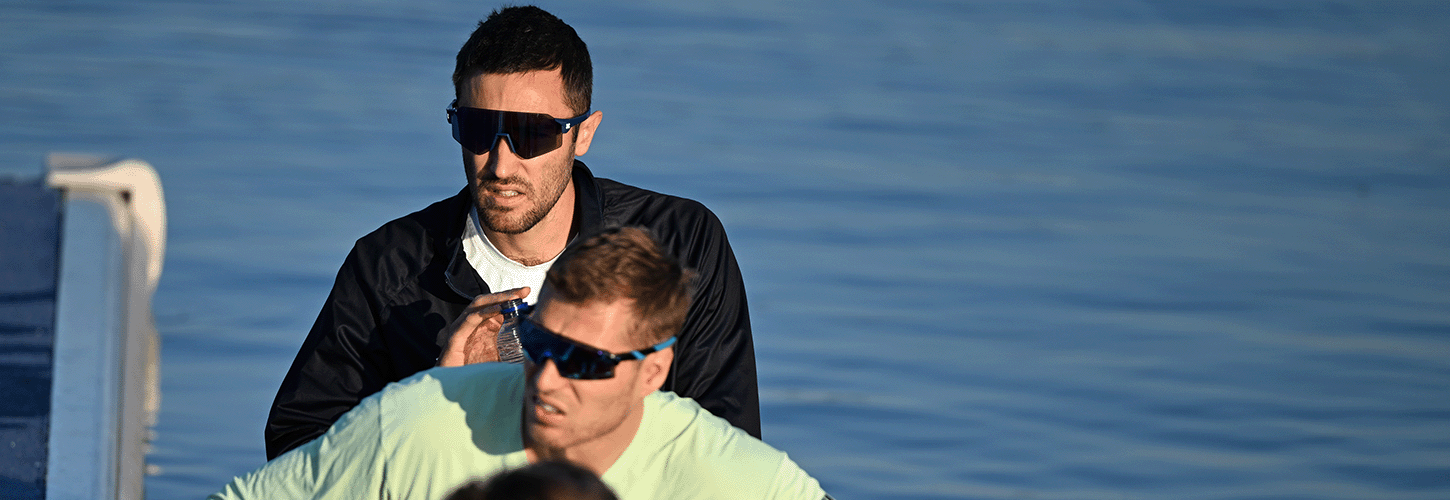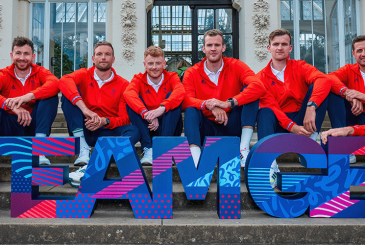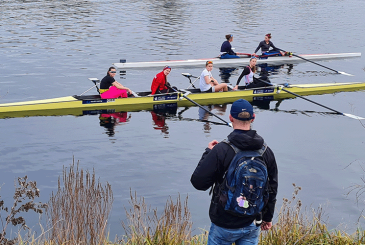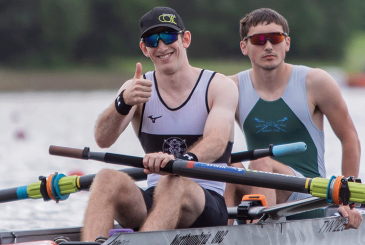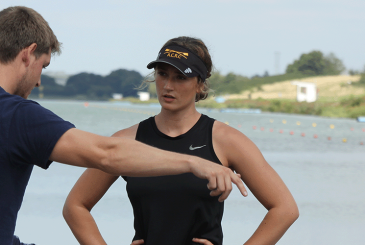Nerves are not necessarily a bad thing. Rather, they’re a sign that you care and are ready to perform. Olympic Champion Sholto Carnegie shares some tools that helped him stay calm under pressure and turn those pre-race jitters into a driving force for success.
Staying calm under pressure allows you to unlock your full potential and ensure that nerves don’t rerail your performance. Everyone feels nerves, but how you handle them is what will set you apart. If you spoke to my teammates, they would tell you that I felt nerves more than most, but throughout my rowing career I learnt how to harness my pre-race nerves and use them to propel me forward.
Self talk
One of the tools that has helped me is the concept of positive self talk. In simple terms, this is the internal dialog with yourself. It helps encourage and affirm your abilities, replacing negative thoughts with ones that boost your confidence and motivation.
When using this tool, I discovered that speaking to myself in the second person (‘you’) was more effective. Take the example of me sitting on the erg ready to do a 2k test. If I was motivating myself in first person, I might say, “I’ve got this. Let’s make it happen.” But when I spoke to myself in second person, it became, “Sholto, you’ve got this. Let’s make it happen.”
The idea behind it is that we’re often better at giving and accepting advice from others than we are from ourselves. By talking to yourself in the second person, it’s like receiving advice from someone else, which makes it easier to internalise and act on.
Learning self talk is like building a muscle; it takes time
By adopting this I became my own cheerleader! During tough times, I’d be there to motivate myself. Speaking in second person made it feel like encouragement from a coach or mentor, which helped me internalise it more effectively.
When things were going well, I made sure I ran with that confidence and let it spiral, propelling me forward. Learning self talk is like building a muscle; it takes time but by adopting it you will gradually become more resilient and be able to enjoy those high-pressure moments.
Don’t ‘stack the hurdles’ on race days
One of my favorite approaches, especially on race day, is a concept called ‘not stacking the hurdles’, which I learnt from Stephen Feeney, a mindset coach I worked with in the three years leading up to the Paris Olympics.
Here’s how it works. If you were running the 400m hurdles, you wouldn’t place all the hurdles in the first 50m, because you’d trip over and fall. The same applies to the challenges you face on race days.
I realised that worrying about parts of the day before they even happen was not helpful. So, on race day, I wouldn’t allow myself to project my mind too far into the future.
This approach helped me stay calm and present
Instead, I’d break the day up into small sections and focus on completing each one to the best of my ability. So I would eat breakfast to the best of my ability, stretch to the best of my ability, warm up to the best of my ability, and switch off before racing to the best of my ability. Then, I’d focus on taking the first stroke to the best of my ability and so on. Before I knew it, I had completed all these steps to the best of my ability, which amassed to doing the best job I could whilst staying in the moment.
Of course, there were times when I found myself slipping into a negative ’what ifs’ but I would stop the negative self talk and refocus with the gentle (second, person) reminder: “Sholto, focus on the task at hand.” This approach helped me stay calm and present, ultimately allowing me to perform at my best in these high-pressure moments.
Nerves = Privilege
A useful piece of advice I received from another member of the GB Rowing Team was, “People pay thousands to skydive, and we get to feel that almost every week.” This shifted my approach to nerves and made me realise how lucky I was to have something I cared about so deeply, and I started to see nerves as a privilege, not something to fear.
Setting the tone
This concept was adopted by my coach at Yale, Mike Gennaro, He would encourage us to say to ourselves on the morning of a 2k erg or race, “It’s going to be a great day.” This would flick the switch from nerves to excitement.
Instead of worrying, I trained my mind to think about the test as an opportunity instead of a threat. As a result, during my time as a student in America, I learned to enjoy racing, and instead of framing it as not see it as a hard, painful thing (although it was), began seeing it as fun and enjoying the thrill of a race.
Not mentally arriving at the race too early
There have been times in my rowing career when I’ve known that an erg test or trial is coming up, and I’ve the previous weeks or days fretting about the end results. This mindset was not helpful.
Instead of being consumed by worry, I learned to use the positive self talk discipline I mentioned earlier to stop myself mid-thought, reminding myself to trust my training. This would enable me to shift my focus from fear and anxiety to confidence, reinforcing the belief that I’ve trained hard and I’m ready for the challenge.
The key, I realised, was not spending time worrying about the 2k before it even happens – there’s no benefit to arriving mentally at the race too early. Instead, I would deal with the challenge when it’s time to face it.
Using music
I found listening to music a really helpful way of shifting my nerves into excitement. It’s amazing how the right song can switch your mindset in an instant. Don’t be afraid to put those headphones on and listen to some pump-up tunes that get you fired up and ready to race. It’s all about turning that nervous energy into something positive, helping you focus and get in the zone.
Make a pre-race playlist and add songs periodically! Some pre-race tunes have stuck with me throughout my rowing career. A few favourites are ‘Zombie’ (remix by Ran-D) and ‘Tidal Wave’ (by Sub Focus). These tracks have a way getting me in the right headspace before a race or erg test.
Conclusion
I mentor a lot of young athletes, each with their own approach to managing nerves. I encourage them to think of these techniques as tools in a toolbox, each useful for a different situation.
Learning to turn nerves into a positive force is a game-changer – it’s not about eliminating fear, but using it to fuel performance.
Banner photo: Benedict Tufnell


